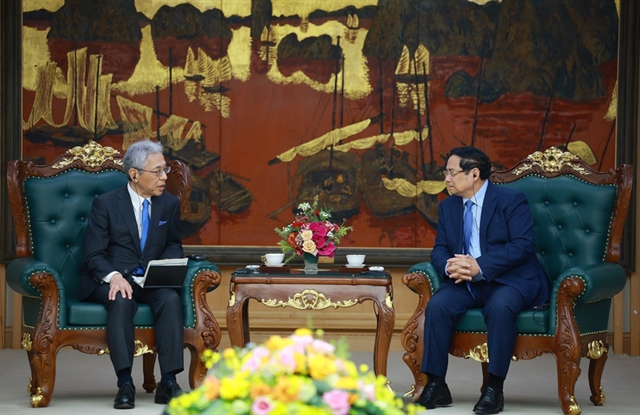 Environment
Environment

 |
| Forest rangers stand beneath an ancient ironwood tree in the Ngọc Sơn–Ngổ Luông Nature Reserve in the northern province of Phú Thọ. VNA/VNS Photo Trọng Đạt |
PHÚ THỌ — Deep in the Ngọc Sơn–Ngổ Luông Nature Reserve, a cluster of ancient ironwood trees stands as a living testament to Việt Nam’s natural heritage. These majestic giants, some over 1,700 years old, owe their survival not only to their remarkable resilience but to the unwavering dedication of local communities and authorities who have banded together to protect this rare forest treasure.
The journey to this secluded cluster begins at Forest Protection Station No 3 in Bo Trẳm Hamlet, a one-hour trek through rolling grassy hills, dense bamboo groves, and slippery limestone slopes. The largest ironwood here, with a circumference of 11.1 metres, is so vast it would take more than a dozen people holding hands to encircle its massive trunk.
For the local Mường ethnic community, these ironwoods are far more than trees. They are sacred guardians of the forest, symbols of peace and prosperity deeply woven into cultural traditions and spiritual life.
According to the Ngọc Sơn–Ngổ Luông Nature Reserve Management Board, approximately 35 ironwood trees grow in the reserve, aged between 663 and over 1,700 years. Eleven of these have been officially recognised as Việt Nam Heritage Trees, covering some 140 hectares at an average altitude of 800 metres above sea level — a rare and precious natural treasure.
Vice Chairman of the Việt Nam Heritage Tree Council Trần Ngọc Hải describes each Bo Trẳm ironwood as a living witness to history, carrying immense scientific, ecological and cultural value. As one of the last surviving clusters of its kind in Việt Nam, these trees stand as irreplaceable relics of the past.
Ironwood is renowned for its exceptional hardness and durability, resistant to pests and weather for centuries. Unfortunately, this made it a prime target for illegal logging in years gone by. Over a decade ago, rampant exploitation posed a serious threat to these ancient giants. However, through the joint efforts of local authorities, rangers and communities, the cluster remains intact today.
“Primary forests are more than biodiversity reserves,” said Director of the Ngọc Sơn–Ngổ Luông Nature Reserve Management Board Bùi Văn Tiềm.
“Roots hold the soil and water, canopies regulate the climate and provide shade. Protecting the forest means preserving Mường culture, memory and life for generations to come.”
Power of community
In Bo Trẳm Hamlet, every household has pledged not to cut trees, hunt wildlife or burn forests for cultivation. During the dry season, villagers actively work to prevent forest fires.
Village head and forest protection team leader Bùi Văn Thuấn explains that local customs require ritual offerings to forest gods before any tree felling for house building.
“In earlier times, poverty and limited awareness meant some villagers cut precious timber just to survive,” he said. “Today, they understand the forest’s crucial role in preventing floods, landslides and extreme heat, which has made the hamlet remarkably resilient to natural disasters.”
Forest protection is now ingrained in everyday life. From elders to children, anyone spotting a stranger in the forest asks about their purpose and suspicious activity is reported immediately to rangers.
“At Station No 3, we see forest protection not just as a duty but as caring for our own family,” said ranger Quách Văn Bản.
“These trees survive and grow because of the love and responsibility shared by the commune, rangers and Bo Trẳm villagers.”
Each year, villagers participate in fire prevention training, patrols, vegetation clearing and firebreak maintenance.
Thanks to these efforts, forest cover in the reserve has reached nearly 90 per cent.
For Director Bùi Văn Tiềm, this achievement is more than ecological—it is “living proof of the power of community in safeguarding not only the forest but the green lungs of life.”— VNS




